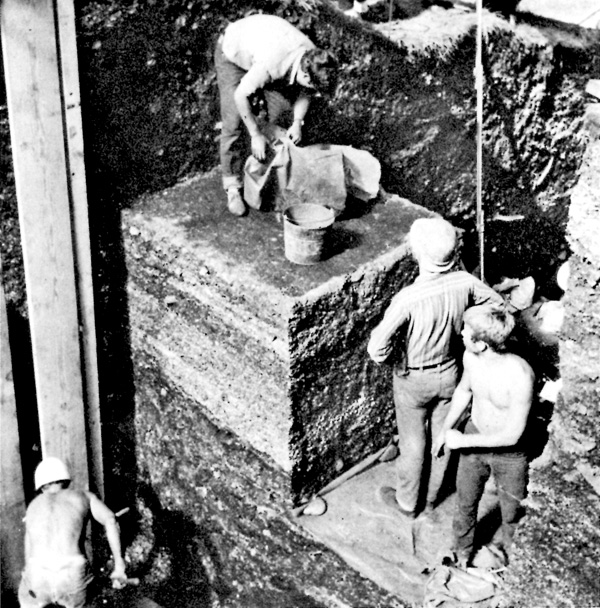|
|
 |
Canadian Historic Sites: Occasional Papers in Archaeology and History No. 1
Archaeological Investigations of the National Historic Sites Service, 1962-1966
by John H. Rick
Excavations in British Columbia
Yuquot
In 1778, Captain James Cook visited the Nootkan
Indian village of Yuquot on Nootka Sound on the west coast of Vancouver
Island. Finding the natives hospitable, he named the cove on which their
village was situated "Friendly Cove." It was not, however, until 1788
that a European, John Meares, settled at Friendly Cove. He built a small
dwelling and a shipyard from which he launched the schooner Northwest
America. His activities in the area were cut short by the arrival
of Esteban Josť Martinez who seized several vessels for illegally
participating in the sea otter trade in Spanish territory. To reinforce
their territorial claims, the Spanish built a small battery on the
nearby island of San Miguel and constructed a hospital, bakery, two
carpenter's shops and other buildings on the shores of Friendly Cove.
Since this site represents the most northerly
extension of Spanish settlement on the west coast of North America, it
was felt that archaeological investigation might yield interesting data
on the adaptation of the Spanish to a northern climate. Moreover, the
six-year span of Spanish occupation would mean a closely dated
collection of artifacts for comparative purposes. Consequently, on
completion of his work at Coteau du Lac in June, 1966, William J. Folan
began excavations at Friendly Cove; his senior assistant was John T.
Dewhirst.
Extensive trenching on San Miguel Island failed to
reveal substantial traces of the battery or any significant amount of
Spanish artifacts. The search for other Spanish structures was hampered
by the fact that the present-day village of Friendly Cove is built on
top of the Spanish site. Nevertheless, by placing trenches in the open
spaces between houses, it was possible to excavate some of the areas
where documentary evidence suggested Spanish buildings had been
located. A number of artifacts of European manufacture were found, but
there was little trace of Spanish structural remains; however, the
quantity of bone points and harpoon barbs that were uncovered suggested
that the village was built on a large midden and subsequent excavation
revealed midden deposits 18 ft. deep. These yielded an excellent
collection of pre-contact Nootkan artifacts including a few zoomorphic
figures carved from ivory and stone. A number of Nootkan songs were
recorded, among them one describing the Spanish occupation.
A brief survey carried out in the vicinity of
Friendly Cove revealed nine additional sites, mostly identified
by their shell mounds.

17 Excavation of the stratified shell midden
underlying the Nootkan village of Yuquot. Comparatively few traces were
found of the 18-century Spanish occupation despite extensive trenching
among the houses of the present-day village of Friendly Cove and on
nearby San Miguel Island. The midden proved to be about 18 ft. in depth
and yielded an excellent sample of pre-contact Nootkan artifacts.
(M. Folan.)
|
|

